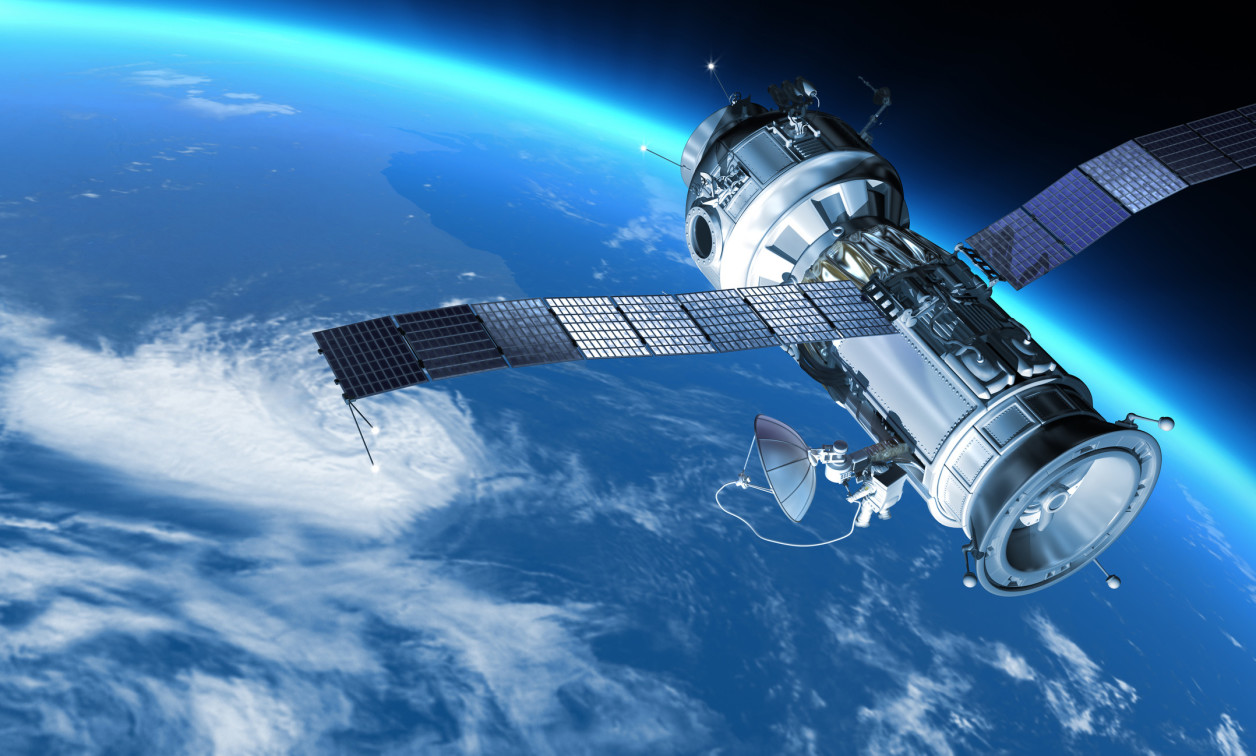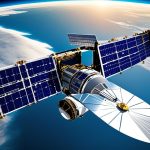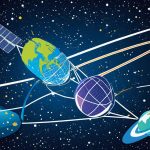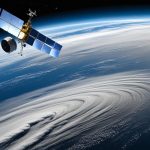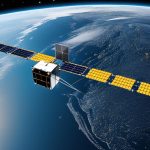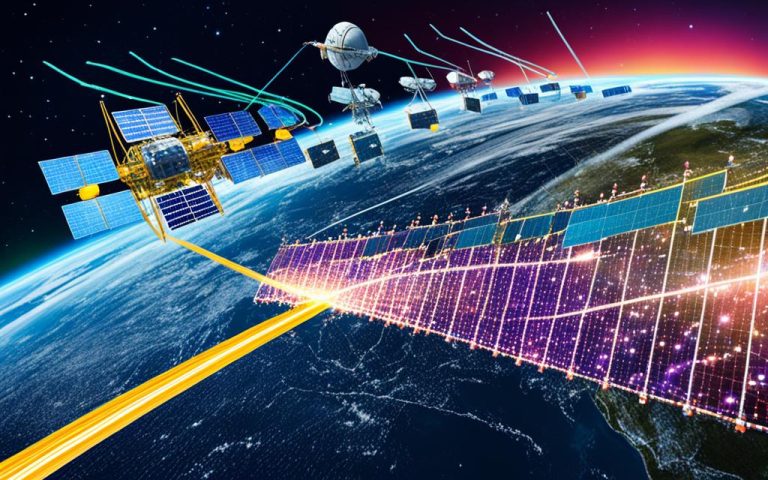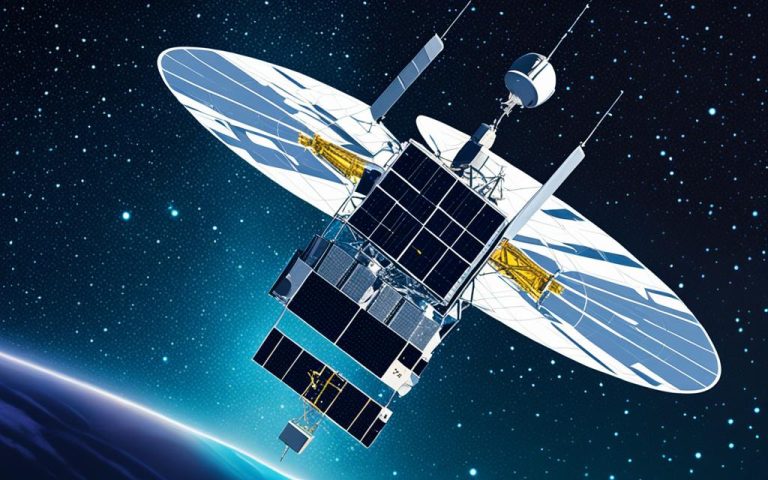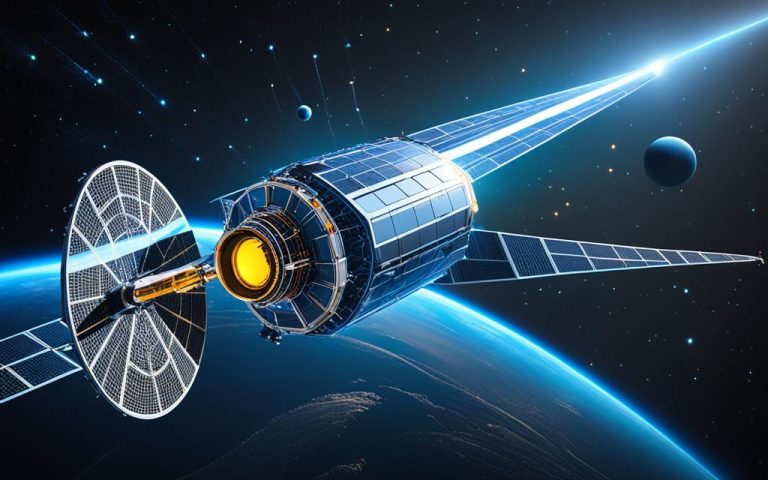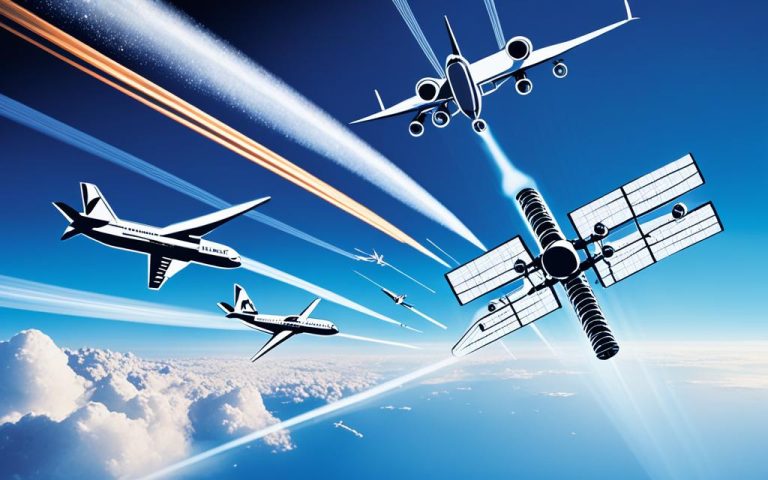When it comes to military operations, satellite technology provides invaluable advantages and defense capabilities. Military satellites have become indispensable assets in ongoing conflicts, offering a plethora of strategic benefits to armed forces worldwide.
Since their inception in the 1950s, satellites have played a pivotal role in military activities. The United States, in particular, spearheaded the use of satellites for military purposes, starting with photographic reconnaissance missions. Over time, their applications expanded to include early warning systems, intelligence gathering, communication links, navigation aids, and meteorological data acquisition.
Military satellites enable armed forces to have a comprehensive view of the battlefield, enhancing their operational agility and situational awareness. For instance, the Indian armed forces heavily depend on military satellites for early warning, especially in critical situations like the ongoing standoff in Ladakh.
To better understand the significance of military satellites and their impact on defense capabilities, it is essential to delve into the early days of these space-based assets and explore their diverse roles and functions.
The Early Days of Military Satellites
The first formal military satellite program, Weapon System 117L, was initiated by the United States in the 1950s. This program included the Corona series of reconnaissance satellites that were designed to capture high-resolution photographs of designated areas on Earth. The satellite would then re-enter the Earth’s atmosphere and release the payload containing the photographs for recovery. The Corona program was eventually terminated due to interference by the Soviet Union.
Although short-lived, the Corona program paved the way for the development of future military satellite programs and showcased the potential of using satellites for reconnaissance purposes. The program’s success in capturing valuable intelligence and providing critical information to military forces highlighted the strategic advantage of military satellites in gathering vital data and enhancing situational awareness.
“The Corona program showcased the remarkable capabilities of military satellites, enabling precision surveillance and gathering crucial intelligence for military operations.”
Additionally, the Corona program’s innovative image recovery method through re-entry and payload retrieval set the stage for future advancements in satellite technology, particularly in terms of data retrieval techniques. This laid the foundation for subsequent military satellite programs to harness the power of satellite imagery for military intelligence and operational planning.
A significant legacy of the Corona program was the recognition of the importance of satellite reconnaissance in national defense. It paved the way for subsequent military satellite programs, such as the KH-11 and the ongoing evolution of reconnaissance satellites, which continue to strengthen defense capabilities and enhance military operations worldwide.
To gain a better understanding of the significance and impact of the early military satellite programs, let’s take a closer look at the key features of the Corona program and its contributions to the advancement of military satellite technology.
The Role of Military Satellites
Military satellites play a critical role in enhancing the operational capability of armed forces. These sophisticated technological assets enable defense forces to gain strategic advantages in various aspects of military operations.
The utilization of military satellites encompasses a wide range of functions, including:
- Operational Capability: Military satellites provide early warning related to enemy movements, allowing military forces to respond swiftly and effectively. They gather and communicate intelligence information, enabling strategic decision-making and enhancing situational awareness.
- Military Surveillance and Reconnaissance: Satellites play a crucial role in military surveillance and reconnaissance missions. They can capture high-resolution imagery of targeted areas, monitor enemy activities, and provide real-time intelligence.
- Communication Links: Military satellites facilitate secure and reliable communication in remote and inaccessible areas. They establish communication links between military units, enabling seamless coordination and information exchange.
- Navigation and Coordination: Satellites support navigation systems for precision positioning, ensuring accurate movement of military assets. They also provide critical coordination capabilities, allowing synchronized operations between different units.
- Broadcast Relays and Meteorological Data: Military satellites enable broadcast relays, ensuring reliable dissemination of information to military personnel. They also gather and provide meteorological data that aids in mission planning and decision-making.
The operational capabilities provided by military satellites significantly enhance the efficiency and effectiveness of defense forces. By expanding coverage globally and minimizing the risk of enemy interference, military satellites contribute to the readiness and success of military operations.
The Impact of Military Satellites
“Military satellites revolutionize how armed forces operate by extending their reach, enhancing their awareness, and ensuring reliable communication links even in the most remote and challenging environments.”
The utilization of military satellites has transformed the landscape of modern warfare. With their advanced technology and capabilities, armed forces can conduct operations with greater precision, speed, and efficiency. The extensive coverage provided by military satellites enables defense forces to monitor and respond to threats globally, ensuring national security.
Foray into Space by India
India’s association with space research dates back to the 1920s, but it gained significant momentum with the establishment of the Indian Space Research Organisation (ISRO) in 1969. Since its inception, ISRO has been at the forefront of India’s space endeavors, both in the civil and military domains.
Recognizing the strategic value of space technology, India has launched military satellites into orbit to bolster its defense capabilities and support military operations. These satellites provide vital intelligence, surveillance, and reconnaissance capabilities, enhancing situational awareness and enabling precise decision-making on the battlefield.
One noteworthy achievement of ISRO is the successful deployment of the military surveillance and reconnaissance system, operational since 2007. This system comprises a constellation of satellites that monitor strategic regions, gather crucial data, and enable real-time analysis for military planning and operations.
Continuing their commitment to space technology, ISRO is actively working to expand the number of military satellites in orbit. By doing so, India aims to further strengthen its defense capabilities and ensure the security of the nation.
“Space technology has become an integral part of modern warfare. The deployment of military satellites by India demonstrates the nation’s commitment to leveraging cutting-edge technology for national defense and security.”
As India continues to venture into space, the Indian Space Research Organisation remains at the forefront of pioneering advancements in space technology, solidifying the country’s position as a space power with both civilian and military applications.
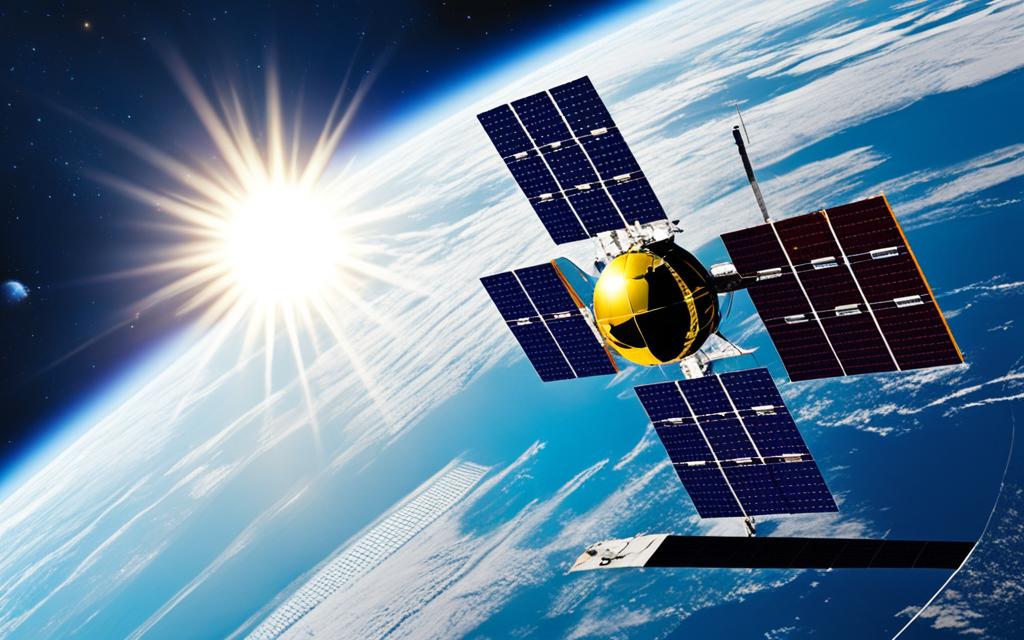
Technical Aspects of Satcom
Satellite communications (Satcom) is a key component of modern military operations, enabling secure and reliable communication across vast distances. Understanding the technical aspects of Satcom, including frequency bands, modulation, encryption, and orbit selection, is crucial to optimize communication capabilities and ensure operational security.
Frequency Bands
Satcom operates across various frequency bands that offer specific applications and advantages. These bands include:
| Frequency Band | Applications | Advantages |
|---|---|---|
| C-band | Satellite TV, radio broadcasting | Less susceptible to rain fade |
| X-band | Military communication, radar | Highly focused and precise signals |
| Ku-band | Broadband internet, direct-to-home TV | Higher data rates, smaller antennas |
| Ka-band | High-capacity data transfer | Greater bandwidth availability |
| L-band | Global navigation systems | Excellent coverage, penetration through obstacles |
| S-band | Weather monitoring, maritime communication | Resistant to signal interference |
Modulation and Encryption
To optimize communication capabilities, Satcom systems utilize advanced modulation techniques. These techniques ensure efficient transmission of data over the satellite link. Encryption is also employed to secure transmitted information and prevent unauthorized access. By encoding the data, Satcom systems safeguard sensitive military communication from interception and protect operational security.
Orbit Selection
The selection of the appropriate orbit is critical in determining communication latency and coverage area requirements. Satellites can be placed in different orbits, such as:
- Geostationary Orbit (GEO): These satellites remain fixed relative to the Earth’s surface, providing continuous coverage of a specific region. They are ideal for applications requiring a constant connection, such as television broadcasting and long-distance communication.
- Medium Earth Orbit (MEO): Satellites in MEO have shorter orbital periods, providing better coverage and reduced latency compared to GEO satellites. They are commonly used for global navigation systems.
- Low Earth Orbit (LEO): LEO satellites orbit much closer to the Earth, resulting in shorter communication latency and improved signal strength. They are suitable for applications requiring real-time data, such as remote sensing and Earth observation.
The choice of orbit depends on the specific communication requirements and operational needs of the military.
Frequency hopping techniques and spread spectrum are also deployed to mitigate the risks of jamming and interception. These methods enable Satcom systems to dynamically switch frequencies or spread the signal over a wide range of frequencies, making it difficult for adversaries to disrupt the communication link.
By leveraging the technical aspects of Satcom, including frequency bands, modulation, encryption, and orbit selection, military forces can ensure reliable and secure communication, enhancing their operational capabilities and maintaining a strategic advantage.
Strategic Importance in National Defense
Satellites and satellite communications (satcom) play a pivotal role in ensuring strategic advantages for national defense. These advanced technologies provide a wide range of capabilities that enhance command and control, intelligence gathering, surveillance, reconnaissance, precision navigation and timing, interoperability, and rapid deployment in various military operations.
Satellites enable defense forces to establish reliable command and control capabilities, allowing for efficient coordination of military operations across vast distances. With real-time communication and data transmission, commanders can make informed decisions and effectively execute strategies, resulting in enhanced operational efficiency.
Furthermore, satellites facilitate intelligence, surveillance, and reconnaissance (ISR) activities by gathering valuable information from space. Military satellites equipped with sophisticated sensors and imaging systems offer unparalleled surveillance capabilities, enabling the collection of crucial intelligence to support tactical and strategic decision-making.
Precision navigation and timing services provided by satellite systems enable forces to navigate accurately, even in remote or challenging environments. Reliable positioning data allows for precise maneuvering and targeting, enhancing the effectiveness of military operations.
Interoperability is another vital aspect where satellites excel. By establishing standardized communication protocols and technologies, satellite networks enable seamless communication and collaboration between different military forces and coalition partners. This interoperability maximizes collective defense capabilities and facilitates joint military operations.
Satcom also plays a crucial role in facilitating rapid deployment in remote or austere environments. By providing reliable communication links, including voice, video, and data transmission, satellites ensure that military units can swiftly establish connectivity and maintain seamless communication, regardless of the geographical challenges.
Moreover, satellite communication systems offer enhanced cybersecurity and resilience, safeguarding defense networks from cyber threats. Encryption methods and secure communication protocols ensure that vital information remains protected, maintaining operational security under adverse conditions.
“Satellites and satcom provide indispensable tools for modern defense forces, empowering them with real-time information, precision capabilities, and rapid response. Their strategic importance in national defense cannot be overstated.”
| Benefits of Satellites in National Defense | Examples |
|---|---|
| Enhanced Command and Control | Real-time coordination in distant military operations. |
| Intelligence, Surveillance, and Reconnaissance | Sophisticated satellite sensors gathering crucial information for tactical and strategic decision-making. |
| Precision Navigation and Timing | Accurate positioning data for precise maneuvering and targeting. |
| Interoperability | Efficient communication and collaboration between different military forces and coalition partners. |
| Rapid Deployment | Establishing connectivity in remote or challenging environments for swift deployment. |
| Cybersecurity and Resilience | Secure communication channels and protection against cyber threats. |
Conclusion
Space defense and the military uses of satellites are critical elements of modern defense strategies. In today’s digitized and interconnected world, satellites and satcom technology offer strategic advantages that go beyond maintaining military superiority. They also play a crucial role in enhancing global security.
Strategic partnerships further amplify the potential of satellite technology in military operations. The recent collaboration between Viasat and the U.S. Air Force is a testament to the power of such alliances. These partnerships not only benefit defense forces but also have the potential to impact diverse fields like disaster response, education, economic development, and climate monitoring.
To optimize the advantages of satcom in national defense, it is essential for nations to leverage cutting-edge technology, build redundancy in satellite networks, and strengthen international partnerships. These steps will allow countries to fully harness the potential of space defense and satellite technology in military operations, ensuring enhanced security and preparedness in an ever-evolving geopolitical landscape.
FAQ
What are the military uses of satellites?
Satellites used for military purposes play a crucial role in ongoing military conflicts and provide strategic advantages to defense forces. They can be employed for early warning, intelligence gathering, communication links, navigation, and meteorological data.
When did the United States initiate its first military satellite program?
The United States initiated its first formal military satellite program, Weapon System 117L, in the 1950s. This program included the Corona series of reconnaissance satellites designed for capturing high-resolution photographs of designated areas on Earth.
What is the role of military satellites in enhancing the operational capability of armed forces?
Military satellites provide early warning related to enemy movements, gather and communicate intelligence information, facilitate communication in remote and inaccessible areas, and support navigation, communications, broadcast relays, and meteorological data. These functions give military forces an advantage by expanding coverage globally and minimizing the risk of enemy interference.
When did India begin its association with space research, and what is its current involvement in military satellites?
India’s association with space research began in the 1920s but received significant boost with the establishment of the Indian Space Research Organisation (ISRO) in 1969. ISRO has since been responsible for India’s space endeavors, including the launch of military satellites to enhance defense capabilities and support operations.
What are the technical aspects of satellite communications (satcom)?
Satcom operates across different frequency bands, including C-band, X-band, Ku-band, Ka-band, L-band, and S-band. Each band has specific applications and advantages. Satcom systems utilize advanced modulation, encryption, and orbit selection strategies to optimize communication capabilities and ensure operational security.
What is the strategic importance of satellites in national defense?
Satellites and satellite communications (satcom) enhance command and control capabilities, facilitate real-time intelligence, surveillance, and reconnaissance, provide precision navigation and timing services, enable interoperability in coalition operations, and support rapid deployment in remote or austere environments. Satcom also offers enhanced cybersecurity and resilience, ensuring secure communication channels and maintaining operational security under adverse conditions.
What is the significance of the military uses of satellites in modern defense strategies?
The military uses of satellites play a vital role in maintaining military superiority, enhancing global security, and impacting various fields, such as disaster response, education, economic development, and climate monitoring. Strategic partnerships further expand the potential of satellite technology in military operations, including the recent collaboration between Viasat and the U.S. Air Force.

